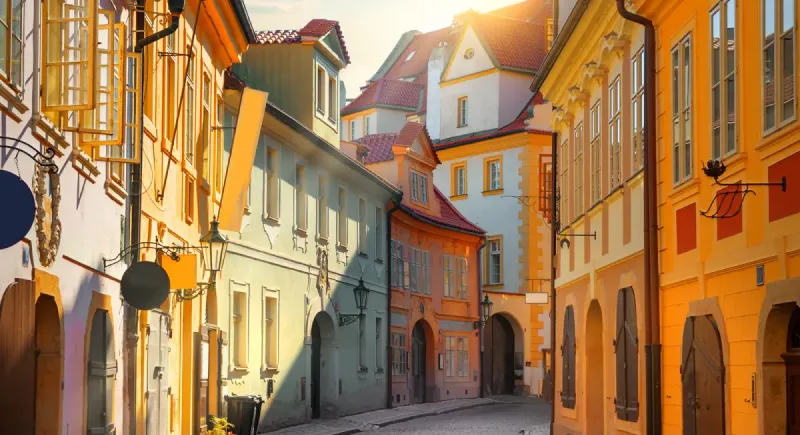
Names are often misleading. Coming from the long forgotten past, their origin and reasons are lost and we only guess why and how they appeared. The part of the historic centre of Prague called Little – or Lesser – town is neither smaller, nor less important or pretty than other parts of the old Prague. Just in the contrary: you will find here beautiful palaces and gardens, splendid monastic foundations and churches, or colourful houses with great history.
If we skip the history of the settlement along the left side of Vltava river in prehistoric times, the first date to note is 1257: the Czech king Přemysl Otakar II. granted the community here urban rights. The town developed succesfully and is known today for many pioneer deeds: in 1352, the augustinian monks have opened the first regular Bohemian brewery in their convent around the Church of Saint Thomas, the Johanites – later known as the Kinghts of Malta- have opened their first charity building here, which was later followed by the italian community organising one of the most wealthy and powerfull charity organisations and hospital along the hill under Strahov monastery, their motto „Pro deo et paupere“ – „For god and poor“ became notoriously known and their charity work served as pattern to many other foundations. They provided shelter for abandoned children within the pattern of the Italian medieval children shelters.
In 1575, so called Česká konfese – Czech confession (Confessio Bohemicum) – the first document in Bohemia openly confessing other than catholic faith, which created the base for other Christian denominations in the country, was signed by prominent country leaders in the city hall of the Little town.
After the great fire in 1541, which destroyed most of the medieval town including a part of the Prague Castle (133 out of 211 houses were in ruins), all historical land registers and much more, the city started to convert into a palace quarter of those who wanted – and could have afforded – to be close to the emperor, to the castle. It is said that the fire opened the door to the renaissance in Prague: small grounds were unified into large ones, the composition of the inhabitants started to change and Lesser Town became a place of noble families and their courts. A large community of Italian craftsmen settled on its edge and created a beautiful renaissance town full of palaces, gardens, statues etc. Great Italian architects such as Domenic Bossi, Ulrico Aostali de Salla, or later in Baroque period Giovanni Mario Filippi made a unique world of a town which si mostly preserved till our times.
The last important architectural perodo was that after 1620 which marked building of palaces such as that of the duke of Wallenstein.
Today, a large part of the quarter and palaces serves as seat of many Czech institutions, the Senate, the Parliament, several Ministries and so on.
The Little town is one of the most essential parts for visiting the city of Prague and it should not be missed. Even if you stay in other parts of the town, e.g. in the Old Town of Prague, in a style and comfortable Rott hotel, you should definitely cross the river and spend at least a half day visiting this amazing city part. And when you get back, do not forget to have a good coffee or tasty dinner in Nuance restaurant, just a few steps walk off the bridges connecting the two Vltava banks.
